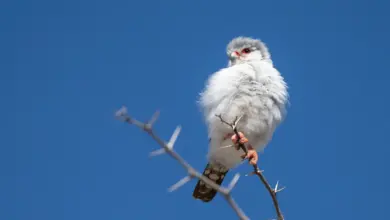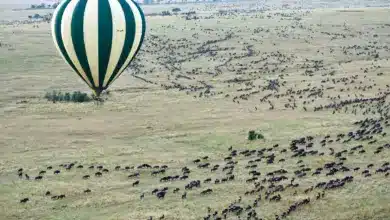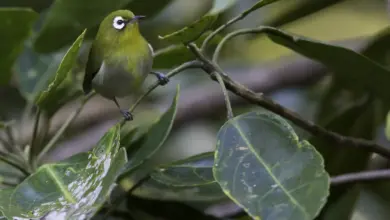Distribution / Habitat
In New Guinea, these raptors have been reported …
- … in the mountains of the Central Ranges and Vogelkop, ranging mostly from 1,600-3,500 m, but rarely as low as 1,100 m (Beehler et al. 1986).
- … the Eastern Highlands from at least 5,500 to 8,700 ft (1,676 to 2,652 m), but at a low density.
- … Western New Guinea (Vogelkop Mountains)
Preferred Habitats:
They inhabit montane forests, but can occasionally be spotted at forest edges or in adjacent gardens.
They are generally resident (non-migratory), but juveniles are known to disperse from breeding areas.
Subspecies and Ranges:
Two forms are currently recognized. However, some authorities don’t recognize two races and merge the subspecies with the nominate form.
Black-mantled Goshawks (nominate) (Accipiter melanochlamys melanochlamys – Salvadori, 1876)
Range: Western New Guinea (Arfak Mountains / Vogelkop Mountains)
Black-mantled Goshawks (ssp. schistacinus) (Accipiter melanochlamys schistacinus – Rothschild and Hartert, 1903)
Range: Montane forests of central and eastern New Guinea (Weyland, Upper Mamberamo, Oranje, Giluwer, Hagen, Bismarck, Kubor, Huon, and southeastern New Guinea). Elevations: from 4,800 to 9,600 ft (1,463 to 2,926 m).
The race found in eastern parts is said to have a paler plumage.
Description
Size
Black-mantled Goshawks measure between 11.8 – 16.9 inches (30 – 43 cm) in length.
Plumage Details / Adults
Reddish brown below and blackish brown above (including head)
Other Physical Details
Yellowish legs, claws, and bills.
Yellow eye-rings.
Gender ID
The juveniles on this page were ID by experts in this field (according to Chuck Brannon). The difference in plumage is quite startling. As one can see the back is varied brown. Vertical lines are running down the chest towards the stomach, and from the head towards the upper back.
Diet / Feeding
These raptors mostly feed on birds, frogs, and insects.
Breeding / Nesting
As is typical of raptors, they build bulky stick nests in tall trees.
Alternate (Global) Names
Chinese: ??? … Czech: Jestráb cernopláštíkový … Danish: Rødbuget Duehøg … Dutch: Zwartrughavik … Estonian: süsi-raudkull … Finnish: Keikarilintuhaukka … French: Autour / Épervier à manteau noir … German: Mantelhabicht, Schwarzmantelhabicht … Indonesian: Alap-alap punggung hitam, Elangalap Mantel-hitam … Italian: Astore dal mantello nero, Astore mantonero … Japanese: kuroakaootaka … Norwegian: Svartrygghauk … Polish: krogulec czarnogrzbiety … Russian: ???????????? ?????? … Slovak: jastrab ?iernohlavý, jastrab pláštikový … Spanish: Gavilán de Dorso Negro, Gavilán Rufinegro … Swedish: Svartmantlad hök … Tai: Ditchip, Kung-ah
Species Research by Sibylle Johnson
Please Note: The articles or images on this page are the sole property of the authors or photographers. Please contact them directly concerning any copyright or licensing questions. Thank you.




